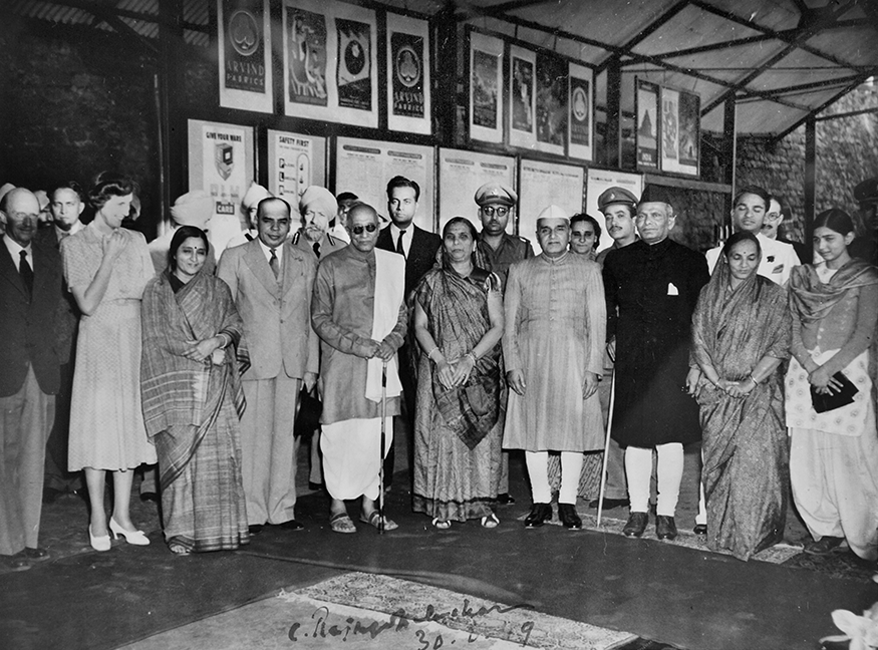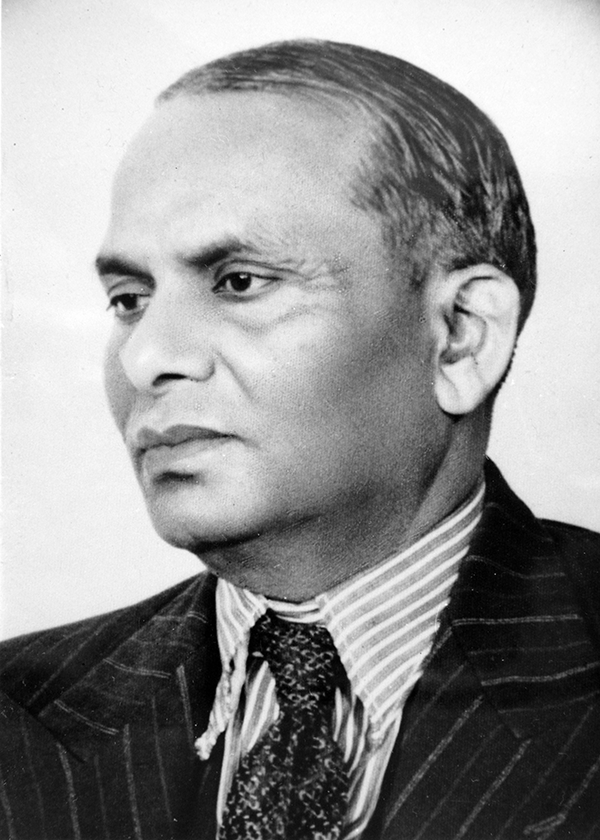Indian miniature paintings include illustrations of sacred or secular books, poetic compositions, epics, Ragamala paintings, darbar scenes, portraits, religious and social festivals. They were exchanged on special occasions as presentation items between kings and courtiers, and also used to embellish the walls of royal palaces, art galleries and bed chambers. They are called 'Miniature Paintings' because of their small size, painted on handmade paper with indigenous mineral colours.

Paintings in the Gallery have been arranged according to the evolution of schools, styles and periods. In the beginning we see early examples of miniature paintings of the Jaina and Sultanate Schools. The folios of the Jaina Kalpasutra and Balagopala Stuti represent painting in Gujarat during the 15th and 16th centuries. The Sultanate style is exhibited through the folios of the Sikander Namah.
One of the most popular collections of the N.C. Mehta Gallery are the Chaurapanchashika series, i.e. the fifty love lyrics of a thief, composed by the Kashmiri poet Bilhana in the 11th century. The story goes that Bilhana, the poet, falls in love with Champavati. The fact comes to the knowledge of Champavati's father, the king, who orders the poet to be sent to the gallows. On the last day, in order to fulfill his final wish, the king allows Bilhana to recite his fifty verses. So pleased was the king with the poetic compositions that he gave his daughter in marriage to Bilhana.
Among other popular themes of Indian miniature paintings are the love poems of the Gita Govinda by poet Jayadeva, the Rasikapriya of Keshavadas, the Satsai of Biharilal, the Barahamasa depictions of seasons and the Ragamala musical modes in colours. Paintings based on epics like Bhagavata Purana and Ramayana are also represented in this gallery. The early Gita Govinda, c.1525 A.D. comprises of 159 paintings and is acknowledged a landmark of transition from Western Indian or Jaina style to early Rajasthani Painting perhaps experimented in Gujarat. It is a living document of the shared culture and tradition of Gujarat and Rajasthan.
On the ground floor a few high quality Jaina miniature paintings introduce to the visitors, the apparent contribution of Gujarat to the development of Indian painting. Then follows the display of Rajasthani paintings belonging to sub-schools of Mewar, Bundi, Kotah, Bikaner, Jodhpur and Jaipur, including few Mughal period portraits.
The first floor gallery now houses a large collection of Pahari paintings. These include some of the masterpieces of Basohli, Guler, Kulu-Mandi, Nurpur, Kangra, and other schools. In the Pahari section, the bright glowing colours and staring eye of the Basohli Gita Govinda stand in striking contrast to the soft, mellow, rhythmic and lyrical paintings of the Guler Gita Govinda. Also on view are a number of Kangra drawings of epics like the Ramayana and other subjects in black ink on off-white paper. The collection includes rare paintings from Malwa and Bundelkhand (Orccha and Datia). Some unique court paintings of Orccha and Datia rulers are displayed for the first time on this floor.
The table showcases have miscellaneous material which includes folios of Jaina manuscripts, painted Pothis, painted book covers, Farmans and manuscripts of Qurans in beautiful Persian calligraphy. The collection includes over 1200 paintings. Of these between 250 - 300 are on display at any given time due to constraints of space. Together, with the paintings in Muni Punyavijayaji Collection and drawings in the Kasturbhai Collection, displayed in the L.D. Museum, it represents the largest collection of Indian paintings in Ahmedabad. Most of the important paintings are published in two volumes of the N.C. Mehta Collection, which were printed with the help of Financial Assistance received from the Ministry of Culture, New Delhi.


Shri Nanalal Chamanlal Mehta, son of Shri Chamanlal Chotalal Mehta, was born at Jaramatha, near Ahmedabad, on 17th November 1892. After his initial education at Rajkot, and at Wilson College Bombay, he obtained a BA in Natural Sciences and Economics at Fitzwilliam College, Cambridge and joined the Indian Civil Service in 1915. At a very young age he was married to Shanta Motilal Shah.
Much of his career was spent in the United Provinces, later known as Uttar Pradesh. His interest in Indian art began with his first posting as an ICS officer in Mathura where he saw some of the great masterpieces of Indian sculpture.
A meeting with the great Shri Rai Krishna Dasa in 1917, by whom he was deeply impressed, led to his lifelong interest in Indian art, literature and painting. His eye for detail led him to become a scholar and connoisseur on the subject. Over the next forty years, he began to collect miniature paintings, at the time unrecognised for their worth and value. The many rare and significant miniature paintings he owned made it one of the world’s most important private collections.
He shared his deep knowledge in his 1926 book, Studies in Indian Painting, (Taraporevala Publication, Bombay) which remains to this day a major contribution to the subject. Gujarati Painting in the 15th Century (The India Society, London) followed in 1931 and then in 1945 a paper titled A New Document of Gujarati Painting- a Gujarati version of Gita Govind (Journal of Gujarat Research Society). Through these books, other papers, and his lectures all over India, he awakened people’s interest in the great beauty and depth of our art.
When in Kashmir on a holiday, he had a heart attack and passed away on 18th May, 1958 at the age of 66 years.
Smt. Shanta Nanalal Mehta, daughter of Shri Motilal Mulchand Shah, was born at Ahmedabad in 1900. After her initial education at the Govt. Girls High School, she was married to Shri Nanalal Mehta in 1915. They had a happy married life and four children.
When Shri N.C.Mehta passed away, some of the leading museums in the world offered to buy his priceless collection. But Smt. Shanta Mehta (at the suggestion of her daughter Smt. Leela Shiveshwarkar) felt there could be no better way to honour his memory than by donating the paintings to the nation. She chose Ahmedabad as both she and her husband had grown up in the city. Another important reason was that Ahmedabad had no such collection in the past.
In 1960, the Gujarat Museum Society was formed as a Public Charitable Trust to facilitate the display of the collection in an aesthetic manner. The Ahmedabad Municipal Corporation offered to house it at the famous Sanskar Kendra, Paldi, designed by Le Corbusier. On 9th May 1963, Pandit Jawaharlal Nehru, India’s first Prime Minister, inaugurated the opening of the collection to the public.
Smt Shanta Mehta passed away on 6th April, 1973 at the age of 73 years.
Over the years, due to the surrounding pollution, some of the paintings began to display signs of strain. After careful consideration, the Board of Trustees decided to shift the exhibit away from the industrial zone. Fortunately the Governing Board of the Lalbhai Dalpatbhai Institute of Indology came forward with a portion of their premises adjacent to the Gujarat University. A new wing to house the collection was designed by the renowned architect of Ahmedabad, Shri B.V. Doshi. The N.C. Mehta Gallery was inaugurated in 1993 by the eminent Art Historian the late Shri Karl Khandalavala.
For more than fifty years, scholars of Indian art have visited Ahmedabad to study this important collection of Indian Miniature Paintings.
Title: A folio from Gita Govinda, Sarga I Medium: Painting on paper Measurement (h x w): 20.8 cm x 33.1 cm, 15.2 cm x 26.2 cm (Painted area) Period: Early 16th Century A.D. Provenance: Gujarat Accession Number: NCM 173.144 Collection: N.C. Mehta Collection (presently housed in Lalbhai Dalpatbhai Museum, Ahmedabad), Description: Gita Govinda, the song of the cowherds, celebrating the love of Radha and Krishna, is a 12 century poetic work by Jayadeva. It was popularized by Shri Chitanya Deva for worship at the Jagannath temple in Puri (Orissa). The theme became so popular in Indian culture, that its pictorial representations were painted by almost all schools of miniature paintings from 16th Century to the 19th Century. The Gita Govinda paintings, in N.C. Mehta Collection, is datable to about 1525 A.D. It indicates the transition of Jaina style of paintings of Gujarat into a new style which prevailed before Mughal and Rajasthani Schools evolved.
Title: Elephant Family Medium: Painting on paper Measurement (h x w): 23.5 cm x 33.7 cm Period: 1700-1750 A.D. Provenance: Kotah School, Rajasthan Accession Number: NCM 28 Collection: N.C. Mehta Collection (presently housed in Lalbhai Dalpatbhai Museum, Ahmedabad) Description: This painting represents a family where the massive elephant, who is the father, covers a large space. The small elephant in the foreground is the cub and at the distance could be a female, who could be the mother. These two are delineated in a relatively smaller size in comparison with the gigantic scale of the male protagonist.
Title: Portrait of Shahjahan (r. 1628 – 1658, deposed, died 1666 A.D.) Medium: Painting on paper Measurement (h x w): 42.2 cm x 27.3 cm, 36 cm x 14.1 cm (Painted and text area) Period: A.H.1006 = 1597 A.D. Style: Mughal School Accession Number: NCM 359 Collection: N.C. Mehta Collection (presently housed in Lalbhai Dalpatbhai Museum, Ahmedabad) Description: The small portrait is mounted along with a Persian poem written in beautiful Nastaliq calligraphy. The name of the emperor, Shahjahan Padshah, is inscribed in minute Persian alphabets on the upper right of the border. The date in Hijri era (1006 = 1597 A.D.) is inscribed at the bottom of the calligraphic sheet. According to this date it appears to be a folio of Persian verse belonging to the late period of Akbar's rule.
Title: Giri Govardhan, Krishna raising Mount Govardhan, Illustration from Gita Govinda Medium: Painting of paper Measurement (h x w): 21.3 cm x 30.7 cm Period: 1730 A.D Provenance: Basohli Kalam, pahari Accession Number: NCM 274 Collection: N.C. Mehta Collection (presently housed in Lalbhai Dalpatbhai Museum, Ahmedabad) Description: Part of an extensive series commissioned by a lady of the Royal house of Basohli, a devotee of Vishnu and herself a poetess who wrote under the pen-name Manaku. It was a common practice for the royal poetesses to write under a pen-name. This miniature belongs to the well-known set of paintings, which has now come to be known as Manaku series.
Title: Group portrait of young Maharajadhiraj Savant Simh with Courtiers Medium: Painting on paper Measurement (h x w): 22.6 cm x 30.1 cm Period: c. 1752 A.D. Provenance: Orchha, Madhya Pradesh Accession Number: NCM 288 Collection: N.C. Mehta Collection (presently housed in Lalbhai Dalpatbhai Museum, Ahmedabad) Description: There are several portraits of Savant Simh representing him at various stages of his life. Here he appears as a young man. It has a detailed inscription on the reverse listing his son, young prince Kunvar Ajit Simh, who is sitting in front of his father on the carpet supported by a big bolster. Beside him delineated in a group are his courtiers, whose names are listed as Sri Rao Bahadur (the divan), Rao Himmat Rai, Lala Nainsukh, Lala Shankardas. On the opposite side are a group of women musicians and a dancer. It is likely that among them are standing the queen and some of them represent wives of the courtiers. The painter has made it clear that it is not a formal court painting but more of a celebration in the palace household in which women-folk also have a role.
Title: Svayambhu Stupa, Newari Buddhist Manuscript Medium: Painting on paper Measurement (h x w): 7.5 cm x 23 cm Period: Mid-16th Century Provenance: Nepal Accession Number: NCM 258.9 Collection: N.C. Mehta Collection (presently housed in Lalbhai Dalpatbhai Museum, Ahmedabad) Description: The folio describes the pleasant view of the hill, thickly covered with colourful trees inhabited by exotic birds. Milky white dome of the stupa, surmounted by the harmika, the gilded cube, with all seeing eyes of the Buddha, sparkles against the bright orange background and immediately attracts the attention of the viewers.